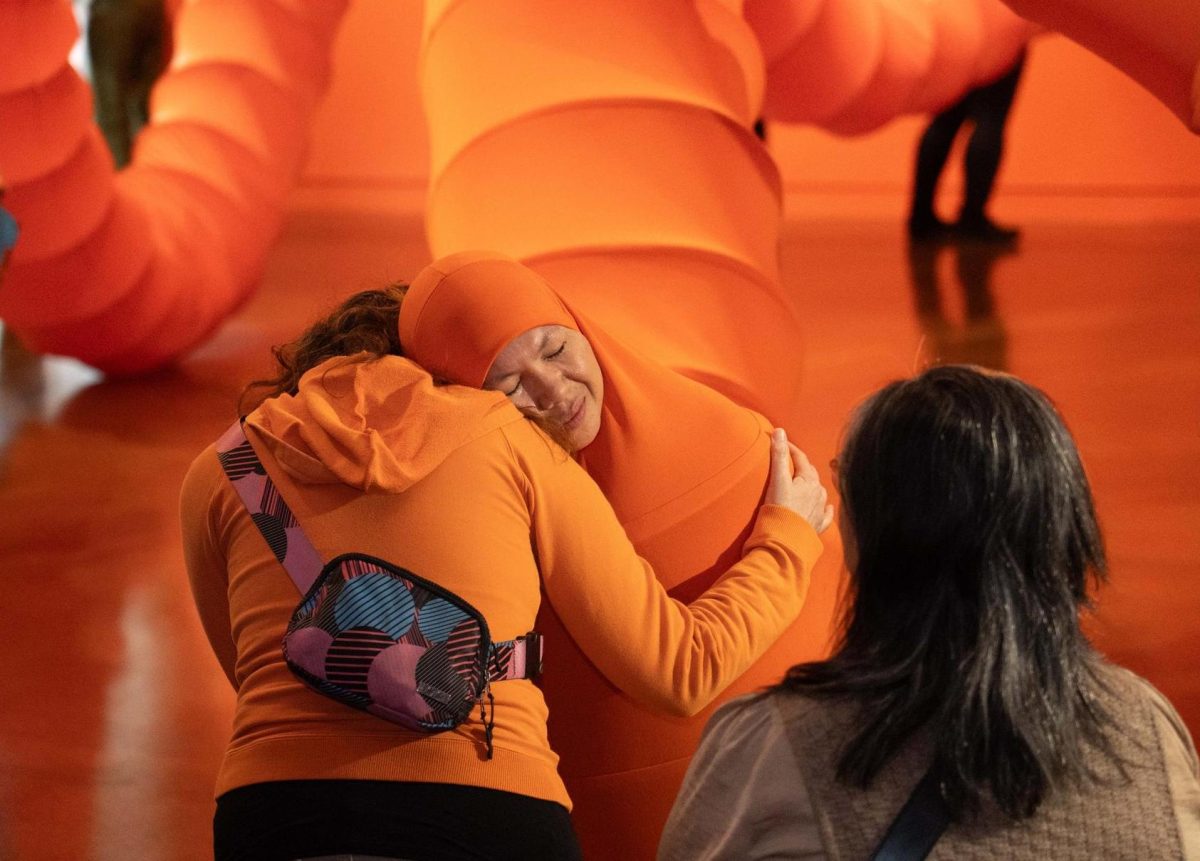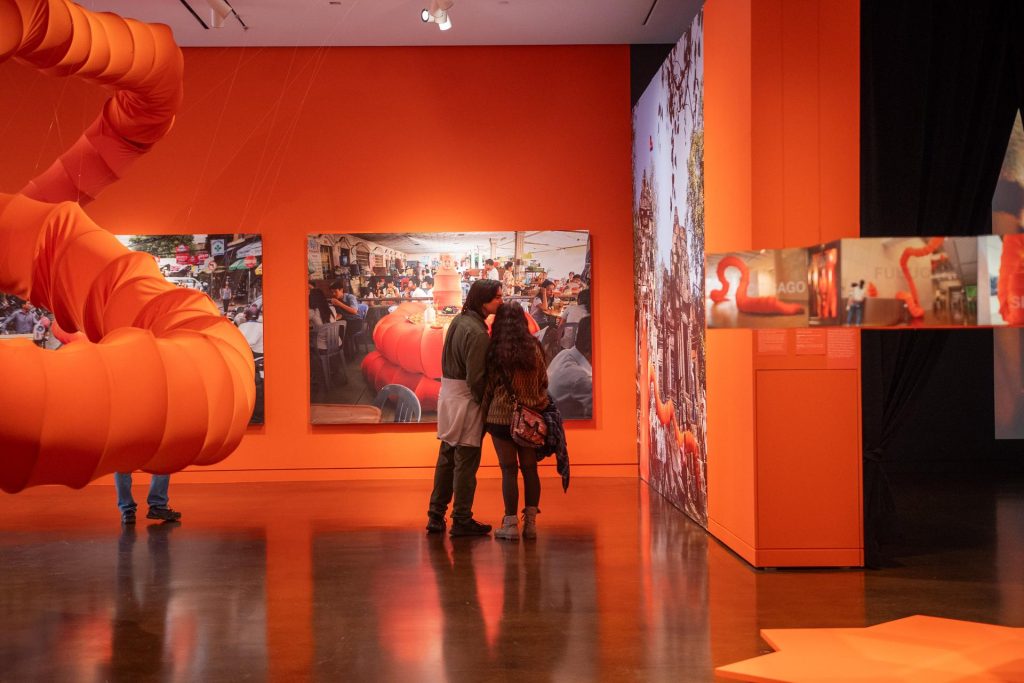Global Agitator: An Interview with Anida Yoeu Ali

Since the debut of Hybrid Skin, Mythical Presence in January, visitors to the Seattle Asian Art Museum have been enthralled by Anida Yoeu Ali’s dynamic performance-based artworks. Now, we speak with the Tacoma-based international artist with the activation of The Buddhist Bug behind her and the activation of The Red Chador taking place on Saturday, June 1.
SAM: Something that connects The Buddhist Bug and The Red Chador is their incredible visual impact that sparks immediate curiosity and delight: the humor and vivid color of the bug and the entrancing sequins of the chadors in all colors of the rainbow. Is this an artistic strategy?
ANIDA YOEU ALI: I know people in general don’t expect to see my specific Asiatic face, with its stoic countenance—which I have inherited from my mother and grandmother—as the visage of The Buddhist Bug or The Red Chador. I’m interested in hypervisibility and an acknowledgement of my presence. I tend to place my body in colors that evoke some kind of joy and pleasure or an infusion of “fabulousness.” For me, performance allows for a magic of reinventing the self and projecting a larger-than-life persona that isn’t imprisoned by oppressive representations. There’s an awareness of the spectacle and ultimately a power in reclaiming the gaze, which has trapped and dehumanized so many of us and our communities.

SAM: You’ve said that the sculptural garments are “artifacts” when not being performed. Tell us about the exhibition space experience you’ve hoped to create for visitors to the museum.
ALI: Many of my installations, whether wearable garments or otherwise, require activation in which the live body completes the artwork. My art form is performance-installation where meters and meters of textile act as skin, as a way for the surface of my body to extend into public spaces, and as a metaphoric device for stories to spread across an expanse. But those stories aren’t literal or spoken; they are experienced through performances and encounters. The audience will need to do the hard work of figuring out what all this might mean to them: personally, politically, and/or spiritually.
I want visitors to pay attention to the encounter they are having with the colors on the walls, the colors of the textile, the highlighted text quotations, the artifacts of performance through exhibited videos, photographs, and installations. In the end, visitors will feel something and they might even be provoked.
SAM: It turns out that The Buddhist Bug and The Red Chador have both been performed at least 16 times. What new discoveries have you made as you’ve enacted the works at different times and places around the world?
ALI: As a performance artist, I put my body into public spaces and take on people’s reactions and responses. If my work provokes, then that means people are not only thinking but they are feeling. I create out of feelings and I want others to feel as well. With every live performance, my body is so publicly accessible that I must engage in a lot of visualization and meditative activities in preparation for a worst-case-scenario situation. However, what grounds me is knowing that someone will be positively affected, whether it’s the ability to bring warmth and smiles to them for a brief moment or offering something unexpected that they will think about beyond the live moment. For me, in every location around the world children and youth have responded with the most joy, curiosity, and genuine wonder. Children have disarmed rare situations in which adult reactions have been alarming or hurtful.

SAM: And what are you excited about for the upcoming performance of The Red Chador on June 1?
ALI: Because my works are more known outside of the US context, I am excited to finally bring this epic performance to the Seattle area. There’s a freedom I feel with performing in public spaces and enacting fantastical/mythical heroines that’s extremely powerful and necessary. All I want to do is to be able to offer people inside and outside my communities an opportunity to witness, engage, and experience a glimpse of the world that I have worked so rigorously to hone.
– Rachel Eggers, SAM Associate Director of Public Relations
This article first appeared in the February through May 2024 edition of SAM Magazine and has been edited for our online readers. Become a SAM member today to receive our quarterly magazine delivered directly to your mailbox and other exclusive member perks!
Photos: Chloe Collyer & Alborz Kamalizad.